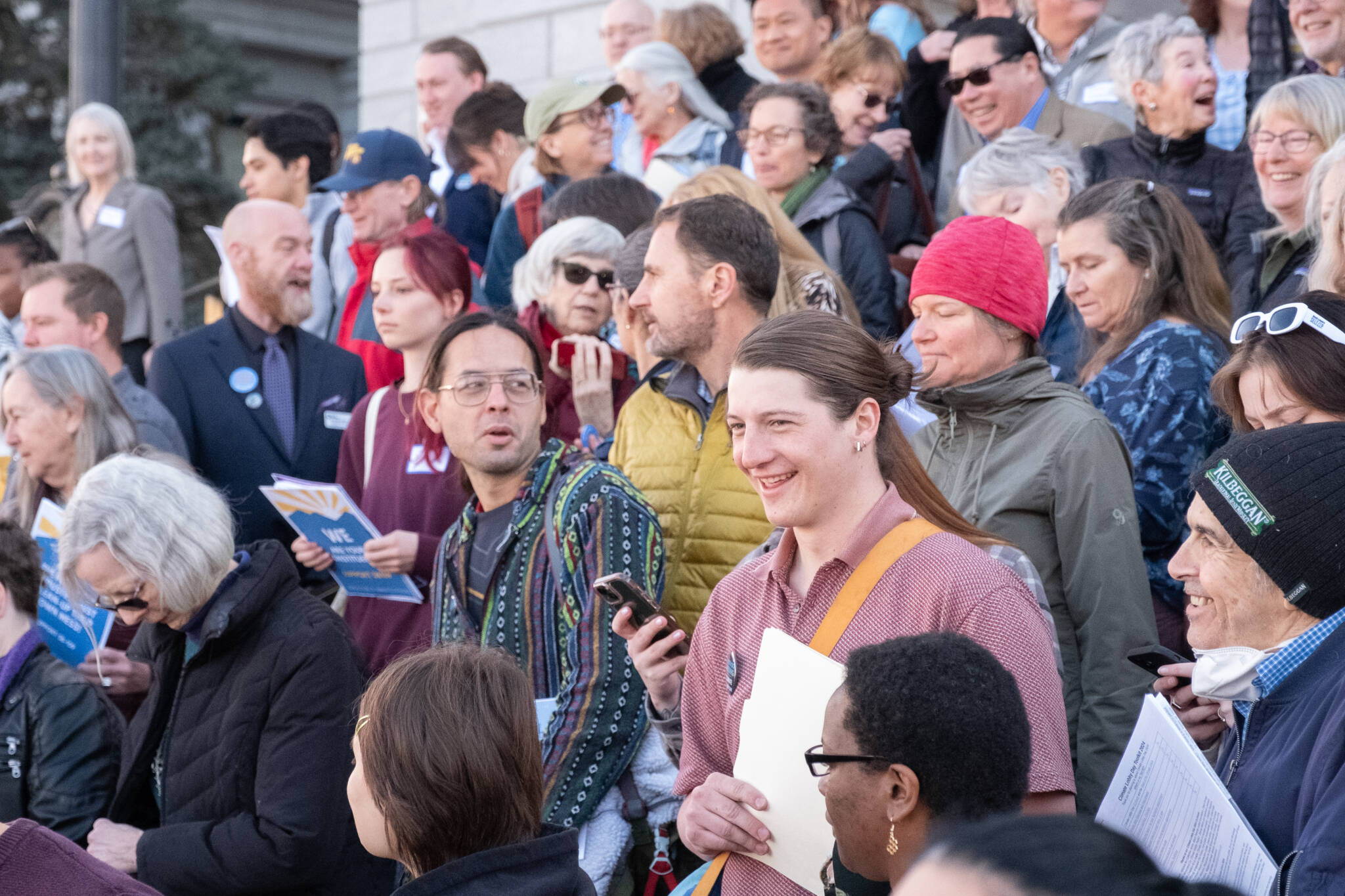by Monterey Buchanan
We’ve all seen the stories of the catastrophic effects of climate change, how they will get worse if nothing is done, and even the damaging mental health effects of living in a warming world.
When the realities of climate change are overwhelmingly bad, and getting worse, it’s easy to get discouraged, and avoid the problem.
But of course, this will only increase the problem. So what is a would-be climate activist to do? If you’re looking to turn a new leaf this spring, read on for ways to start turning your climate anxiety into action.
1.) Start small
Look for little ways to reduce your carbon footprint like going zero waste, reducing single-use plastics, cutting down energy consumption, walking short distances instead of driving, or planting trees. Keep in mind that the goal here is to find what works for you, not to pressure yourself to do it all. Progress over perfection!
For instance, if you have a disability and rely on plastic straws for independence, consider bringing cloth bags to the grocery store, or teaching a friend how to use a public transit route you know well. Keep in mind that we all have skills we can contribute to fighting climate change.
2.) Vote and contact your representative
Even individuals doing everything they can to fight climate change do not have access to the same power and influence as elected representatives. Though politics is often messy and imperfect, electing representatives who not only understand climate change is a threat, but are willing to support policies that quickly address it is essential.
Be sure you are registered to vote, and vote for candidates at all levels of government with strong climate stances. If your representative is a climate denier, or merely paying lip service to climate policy, contact them and tell them you want them to do more.
3.) Start using public transit

People reading and relaxing on public transportation
Using public transit is a wonderful way to help stop climate change. Public transit reduces your carbon footprint, and it builds climate activism into your daily schedule.
Also, if more people use public transit, it shows there is a demand for more transit options, which can lead to more transit being made available, and even more people opting to use it. These are the kinds of positive feedback loops we need to defeat climate change.
4.) Start climate conversations
Words can feel cheap when dealing with climate change, but we can’t fix a problem we are unwilling to talk about. Bring up climate change to friends and family, and if they are supportive, look for things you can do to address climate change in your lives together.
You might find common ground with the people you talk to and help them identify ways that climate change impacts them if you are having a conversation with people who are already invested in climate work, being reminded that climate change matters to other people too, and pointing out the ways you see climate change impacting your life can help you stay invested and engaged in fighting climate change.
If you are looking for ways to start the conversation, tips like these , and discussion podcasts like Climate One can help.
5.) Use your personal experience

Creating a community garden with coalition partners, 2019
While climate change often impacts marginalized people first and worst, people from all walks of life will be impacted by climate change. Don’t be afraid to speak up about the ways you see climate change in your life.
For example, my first article for this blog was about how my grandmother was evacuated during the Marshall fire. This post encouraged me to stay involved with 350 Colorado, and reminded me that climate change impacts people I love.
Speaking up is especially important if you come from a marginalized group. For instance, while there are things that are harder for me to do with a disability, I can teach people how to use public transit, and the disability community can teach people a lot about knowing our limits that is applicable to climate change.
If we highlight the ways that many different communities are impacted by climate change, and center the experiences of marginalized communities like indigenous people, and communities experiencing environmental racism, more people will be engaged in the movement, and the diversity of our experience will make the movement stronger.
6.) Find climate projects in your area
Often when following climate news, it is easy to be overwhelmed by all the climate disruption around the world. While it is important to stay informed, when planning your climate activism, it can help to stay local.
Pay attention to the ways climate change is impacting your local area, and concentrate your time and energy on a few projects in your community, rather than feeling like you have to address every crisis. If you want to work with 350 Colorado on a local project, this page is a good place to start.
Staying local is also a good idea when climate action is political. When political leaders hear from their constituents, seeing that a constituent lives in the area and has a personal connection to that issue can increase credibility with that official
7.) Join an environmental group

350 Colorado, partners, and community members at the Denver Capitol Building, 2024
Joining an environmental group like 350 Colorado makes many of these objectives easier. Keeping your activism local and leaning on the support of other group members reminds you that you are not alone in caring about climate change.
Group resources like email lists (hint: if you’re reading this, you may already be on a 350 Colorado email list) make it easier to be informed about last-minute actions, and to build numbers for letter writing campaigns and direct actions where the goal is to get political leaders to see that a lot of people support climate action. 350 Colorado has been this resource for me, and I would encourage you to get involved if climate change matters to you.
I hope you have some inspiration for how you can help address climate change. Welcome to the movement!
